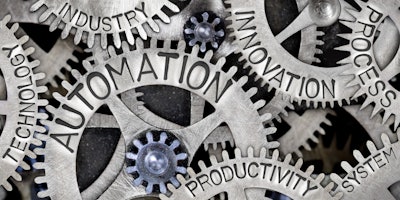
To stay competitive in today’s business environment, plants must modernize and upgrade technologies. Small increases in efficiency can mean substantial advantages. When approaching expansion into automation, simulation, machine learning and edge technologies, there are many options for machine visualization and HMI systems.
Proprietary systems pose significant risks to rapid upgrades and expansions to maintain efficient operations and competitiveness. Difficulty sourcing technical expertise to implement customizations can frequently arise, and long-term maintenance requiring expensive consultants can cause costs to balloon. In addition, vendor consolidations or product releases can obsolesce product lines and end practical support for legacy solutions.
Manufacturers are lowering costs, mitigating risks and gaining control over their technological future by choosing a scalable system built on web-standard technologies, such as HTML5, JavaScript, and SVG images. Unlike proprietary technologies that often require specialized consultants from a limited pool of knowledge, the HTML5 and JavaScript skills needed for customization in a web-standard environment are widely available in the labor force. This empowers manufacturers to embrace proven, industry-standard technologies that boost efficiency and safeguard against plant downtime from business changes beyond their control.
Proactive consideration and planning for future maintenance and growth in engineering and machine software are pivotal to maximizing uptime and minimizing costs. The industry-standard toolsets for customization of HMIs and interfaces with web-based architecture employ technology that benefits from the improvements gleaned with widespread use across the commercial marketplace.
This same technology enables universal compatibility, including cloud environments and mobile devices, while leveraging object-oriented engineering with hierarchical asset structures. Web-standard technology also ensures compliance with existing cybersecurity measures as part of the bridge between IT and OT, giving manufacturers the flexibility and adaptability they need in a rapidly changing business environment.
Visualization Needs Change
Visualization needs are consistently shifting, whether for new executive insights into existing processes, upgrades to existing machines, new sensors or whole new machine design. Visualizations allow operations to control processes and managers to gain insight into plant operations.
Solutions for visualization must have fast response times, ideally be usable on any end device, and be user-friendly and intuitive. Legacy visualization systems were often proprietary, limiting their compatibility for integration and scalability. The high cost of customization for proprietary systems limits the ability to find new and improved ways to deliver information or add insights as processes are upgraded or expanded. Proprietary systems also can have difficulty communicating with other proprietary systems, leading to delays or information loss moving from machine design and simulation to operations and reporting.
Web-standard technologies can unify visualizations across machine design, simulation, machine operation and reporting, and deliver process efficiency and customization flexibility across the manufacturing process from inception through operation.
Working in a unified system at all levels means standardization and transferability of solutions and KPI visualizations to various levels within or across plants. This also eliminates the risk of data being lost moving between disparate systems for design, operations and reporting.
Simple drag-and-drop systems for creation, customization and configuration are one tool to lower the cost of implementing new requirements that can work directly within a web-standard framework. Combined with a browser-based platform that has broad compatibility with mobile devices like tablets, an intuitive toolset makes customization affordable when expanding usability and features, or adding new technologies and machines.
Simulation has become standard across many industries for plants, lines or individual machines as part of the design and operations process, and is an integral part of increasing plant efficiency. Simulation across mechanical, electrical and automation functions saves time and money during startup and when making operational adjustments. A unified HMI and visualization system supports simulation as needed within the same ecosystem as operations and design, and promotes dynamic customization to meet changes in requirements. This streamlines any need for simulation and collaboration without the need for data exports to disparate systems.
Implementing a unified software solution is a step toward consistency, transferability and reliability in plant operations and a direct path to significant improvements at all operational levels. Manufacturers must be agile to keep up with the changing business environment and maintain a competitive advantage. A unified software solution can provide operations with the consistency, transferability and reliability they need to stay ahead. It can streamline processes, enhance communication and improve overall efficiency, creating a more productive and competitive manufacturing environment.






















